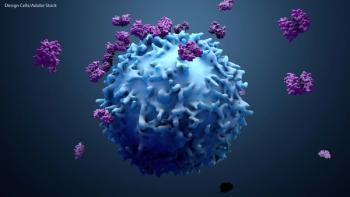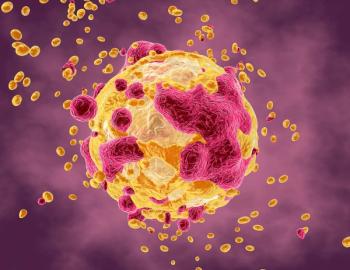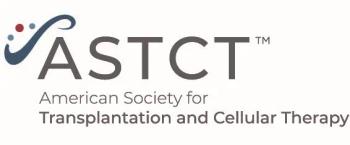
Adaptive Radiotherapy Modality Appears Safe, Feasible in High-Grade Glioma
UNITED is the first trial to assess MR-guided weekly adaptive on-line and real-time radiotherapy with clinical target volume margin reductions.
Weekly on-line MR-Linac (MRL) adaptive radiotherapy plus concurrent temozolomide (Temodar) appeared safe and feasible while significantly reducing the clinical target volume (CTV) margins and normal brain tissue exposure among patients with high-grade glioma, according to findings from the phase 2 UNITED trial (NCT04726397) presented at the
The study included 108 patients who gave consent, and of those patients, 98 who received treatment on protocol. Patients enrolled on the study from April 2021 to May 2023, and all had IDH-wildtype glioma. Additionally, 59 patients received long-course radiotherapy at 60 Gy in 30 fractions, and 39 underwent short-course radiotherapy at 40 Gy in 15 fractions. Across the study population, most patients had MGMT methylated disease (n = 52) followed by MGMT unmethylated disease (n = 41) and MGMT indeterminate disease (n = 5).
After at least 1 year of follow-up across the intent-to-treat (ITT) population, marginal failure occurred in 4% (n = 4/98) of patients, yielding non-inferiority compared with historical rates of marginal failure (P < .001). Additionally, data showed that 81% of patients with radiographic failure also experienced central failure components.
The mean reduction in treated CTV margins was 40% with the adaptive radiotherapy modality compared with the European Organisation for Research and Treatment of Cancer (EORTC) method of 15 mm CTV. Data also showed a mean reduction of 71% with the adaptive modality vs the Radiation Therapy Oncology Group (RTOG) method of T2-weighted fluid-attenuated inversion recovery (FLAIR) plus 2 cm.
Among those who received long-course radiotherapy, the median progression-free survival (PFS) was 11.6 months in the UNITED trial population compared with 9.2 months in the phase 3 SPECTRO GLIO study (NCT01507506), which included a contemporary cohort of 129 patients with glioblastoma treated between 2016 and 2021 with radiotherapy at 60 Gy in 30 fractions plus temozolomide with standard margins using CBCT-Linac Image-Guidance (P = .35). Additionally, the median overall survival (OS) was 18.5 months and 20.5 months in each respective group (P = .53).
For patients who received short-course radiotherapy, the median PFS was 6.8 months in the UNITED population and 5.3 months among patients who received radiotherapy plus temozolomide in the CE.6 cohort in a previous phase 3 trial (NCT00482677; P = .2).2 Data also showed a median OS of 10.6 months and 9.3 months in each respective population (P = .8).
“This is the first trial to investigate MR-guided adaptive on-line radiation with margin reduction. We’ve shown it is safe and feasible; marginal failures are relatively low. We have dramatically reduced the CTV and normal brain tissue that is exposed to radiation, but the real question is [whether] that going to truly improve quality of life and reduce toxicity. That is best determined with a randomized trial,” Jay Detsky, PhD, MD, FRCPC, associate director of Medical Residency at Odette Cancer Centre and assistant professor in the Department of Radiation Oncology at the University of Toronto, said in the presentation.
According to Detsky, other ongoing studies aim to standardize the FLAIR used outside of 5 mm. Investigators are also currently assessing tumor dynamics and advanced imaging biomarkers in this population.
Investigators used a pre-plan reference with MR simulation, and all patients underwent treatment on a 1.5 Tesla integrated MR-Linac device. The CTV was defined as the gross tumor volume (GTV)—the surgical cavity plus any residual enhancing tumor—plus a 5 mm margin while shaving off anatomical barriers and FLAIR involvement at the discretion of the radiation oncologist.
The planning target volume (PTV) was the CTV plus 3 mm. An adapt-to-shape workflow was employed at the first fraction of radiotherapy and then once a week with a Gadolinium-enhanced on-line T1 with contrast and FLAIR plus real-time contouring and planning. The other 4 fractions of the week involved an adapt-to-position workflow where non-contrast imaging was acquired.
The study’s primary end point was the risk of marginal failure. Secondary end points included PFS and OS stratified by radiotherapy schedule, PFS per RANO-HGG 2.0 criteria, tumor dynamics, dosimetry, and imaging biomarkers. Patients with IDH-wildtype glioblastoma or IDH-mutated grade 4 astrocytoma were eligible for enrollment on the study.
References
- Detsky J, Chan AW, Palhares DM, et al. MR-linac on-line weekly adaptive radiotherapy for high grade glioma (HGG): results from the UNITED single arm phase II trial. Presented at the 2024 American Society for Radiation Oncology Annual Meeting (ASTRO); September 29 – October 2, 2024; Washington, DC. Abstract LBA05.
- Perry JR, Laperriere N, O’Callaghan CJ, et al. Short-course radiation plus temozolomide in elderly patients with glioblastoma. N Engl J Med. 2017;376(11):1027-1037. doi:10.1056/NEJMoa1611977
Newsletter
Stay up to date on recent advances in the multidisciplinary approach to cancer.


















































































